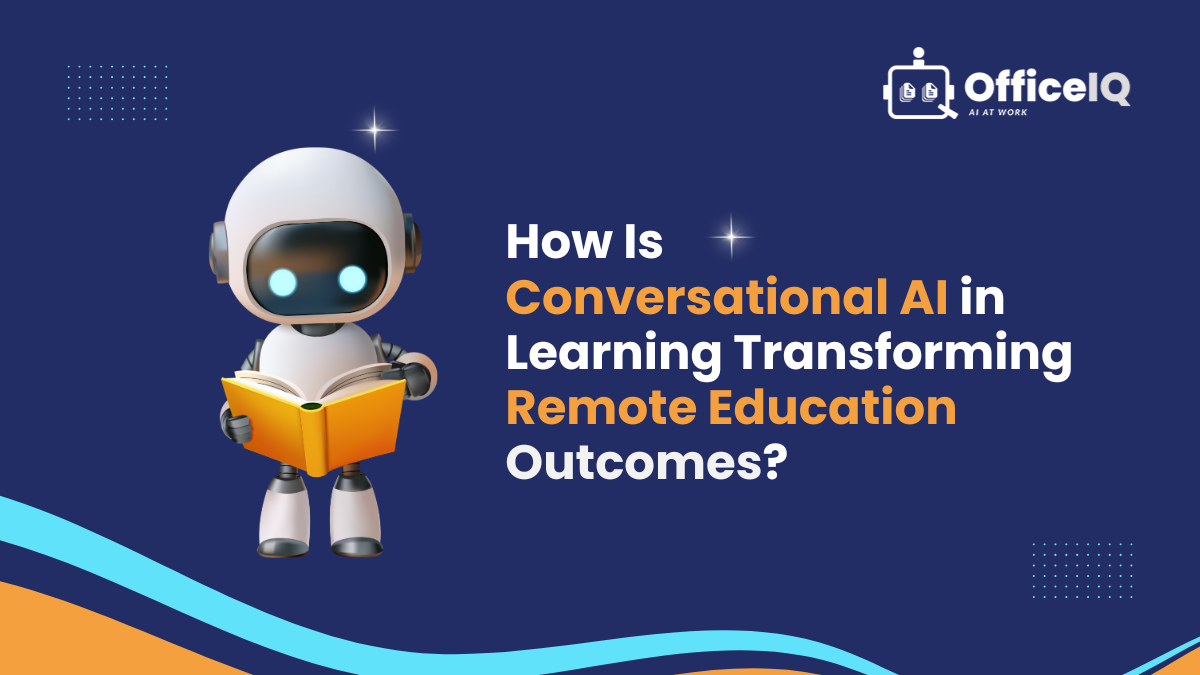Remote education isn’t what it used to be. Gone are the days of static video lectures and endless discussion posts. Thanks to the advancement in Conversational AI in learning, classrooms are now interactive spaces—no matter where students log in from. At the heart of this shift is conversational AI, the technology that powers chatbots, virtual tutors, and intelligent assistants. Let’s look at how conversational AI in education is changing the game, where it’s headed, and what it means for students and teachers.
The Rise of Conversational AI in Education
The pandemic forced schools and universities to rethink how they deliver learning. But even before that, educators were searching for ways to make online learning more engaging and effective. Enter conversational AI: systems that can understand and respond to human language, mimicking a real back-and-forth.
Think of these AI agents as always-available teaching assistants. They answer questions, guide students through tough topics, and even grade simple assignments. But their impact runs deeper:
- Instant feedback: Students don’t have to wait hours—or days—for help. AI agents provide real-time responses, keeping the learning momentum going.
- Scalable support: Whether there are 20 students or 2,000, the AI doesn’t get overwhelmed. Everyone gets attention.
- Language flexibility: Many conversational AIs can switch between languages or explain concepts in simpler terms, helping learners from diverse backgrounds.
Personalized Learning with AI: Meeting Students Where They Are
Every student learns differently. Some need extra practice, others crave a challenge. Traditional classrooms struggle to meet everyone’s needs, but personalized learning with AI can fill the gap.
AI in learning systems track student progress, spot patterns, and adapt content on the fly. Here’s how it works in practice:
- Adaptive quizzes: If a student keeps missing questions on fractions, the AI suggests extra review or breaks down the steps further.
- Study recommendations: Based on performance, the system nudges students to revisit key topics or try advanced material.
- Motivational nudges: Personalized reminders and encouragement keep students on track, especially in self-paced environments.
The result? Students get just-right support—never too much, never too little.
AI Agent Use Cases: Beyond the Basics
Conversational AI isn’t just about answering homework questions. The best AI agent use cases in education show real creativity:
- Virtual tutors: These AI-powered assistants can explain math concepts, walk through science labs, or help with essay outlines—any time of day.
- Student coaching: Some AI agents offer career advice, resume feedback, or study strategies tailored to individual goals.
- Administrative help: Need to register for a course or find campus resources? AI chatbots handle routine queries, freeing up staff for complex issues.
A quick story: One university rolled out an AI chatbot to help first-year students. The bot answered questions about class schedules, campus life, and even where to find the best coffee. Student stress levels dropped, and satisfaction went up.
Top AI Prompts That Make a Difference
The magic of conversational AI comes alive with the right prompts. Here are a few practical examples:
- “Can you explain the Pythagorean theorem in simple terms?”
- “Quiz me on Spanish verbs for 10 minutes.”
- “What’s a good strategy for remembering historical dates?”
- “Remind me to review my biology notes every Thursday.”
The more specific the prompt, the more helpful the AI becomes. Teachers are now designing custom prompts to guide discussions, spark curiosity, and deepen understanding.
Looking Ahead
As AI in learning evolves, expect smarter, more empathetic AI agents and even richer learning experiences. For students learning remotely, that means less isolation, more support, and better outcomes. For teachers, it means more time to inspire, and less time buried in busywork.
The future of remote education isn’t just digital—it’s conversational, adaptive, and deeply human at its core.
FAQs: Conversational AI in Learning
1. How secure is student data when using AI in learning platforms?
Most reputable AI in learning tools follow strict privacy standards. Data is encrypted, and access is limited to authorized users. Still, it’s wise for schools to vet vendors and educate students about responsible data sharing.
2. Can conversational AI replace teachers?
No, and that’s not the goal. AI supports teachers by handling repetitive tasks, offering personalized feedback, and freeing up time for real human connection. The best outcomes happen when teachers and AI work together.
3. Is conversational AI effective for all ages and subjects?
It’s most effective for middle school and up, especially in subjects with clear answers, like math and science. For young children or creative subjects, AI can still help—but human guidance is essential.

Leave a Reply